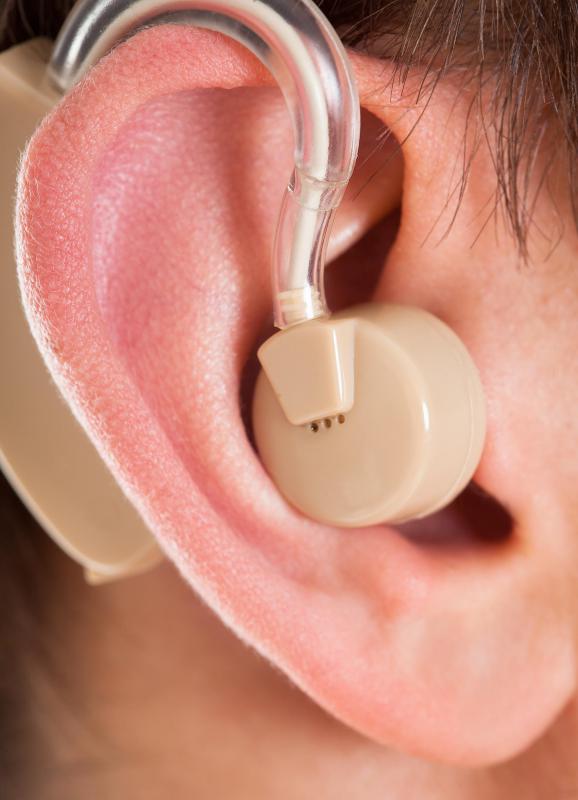At WiseGEEK, we're committed to delivering accurate, trustworthy information. Our expert-authored content is rigorously fact-checked and sourced from credible authorities. Discover how we uphold the highest standards in providing you with reliable knowledge.
What is a Hearing Amplifier?
A hearing amplifier is a device designed to reduce the effect of hearing loss by amplifying sounds. Most types of hearing loss cannot be restored, even by surgical means. Devices to amplify sound can make life easier for those who still have partial hearing. The most common kind of hearing amplifier is a hearing aid. Hearing amplifiers range in complexity from simple cones to sophisticated technology that can be surgically implanted in the user’s head.
The earliest hearing amplifier was a cone-shaped device known as an ear trumpet or ear horn. This functioned in the same way as a natural ear. The wide end collected ambient sound waves and directed them toward the narrow end, which the user held to his or her ear. This non-mechanical device had limited usefulness, to say the least, and is best known today for its occasional appearance in cartoons and old movies, usually in use by an extremely elderly person.

Mechanical and electronic hearing amplifiers were developed in the early 20th century. The first devices employed technology developed for the sound-recording industry. A box containing the amplifying equipment was connected to the ear via a wire or cord. The box was mounted behind the user’s ear or elsewhere and was generally visible to observers. This made the hearing amplifier unappealing to those who were image-conscious or insecure about their hearing loss, long considered a sign of advancing age.

Advances in technology and miniaturization allowed for the creation of a much more aesthetically pleasing hearing amplifier. Some versions of the device were concealed in eyeglass frames or placed deep inside the ear canal. A main drawback of such small hearing aids is feedback. Since the device contains both a microphone and a speaker in close proximity, it can amplify its own sounds, resulting in an unpleasant squeal. High-end modern hearing aids are designed to reduce or eliminate feedback.
Advanced hearing aids are custom-designed to fit their users comfortably, but this makes them very expensive; most state and private health coverage is only available to those with catastrophic or near-total hearing loss. Power sources are also a problem, as the small batteries for hearing aids often need replacement. An alternative for some users is a surgically implanted device such as a bone-anchored hearing aid. This amplifies and directs the sound conducted by the skeletal system itself. The cochlear implant, another surgical device that transmits sound waves to the auditory nerve as electronic signals, is not technically a hearing amplifier.
AS FEATURED ON:
AS FEATURED ON:












Discuss this Article
Post your comments